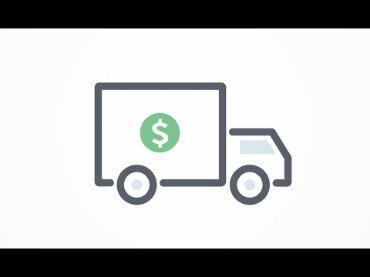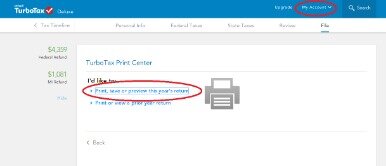Contents:


This graph illustmassachusetts state income tax a theoretical firm value maximizing curve when it comes to a debt-to-equity ratio. The financial leverage index is calculated by dividing the return on equity by the return on assets. ROA measures how much a company is using its assets to generate profits. ROE, also known as return on net worth is a measure of how a business replenishes each dollar of a shareholder’s equity that is used.
- But they do charge interest and have relatively short repayment terms, meaning your investment would have to earn at least enough to cancel out the interest you’d accrue quickly.
- “With this, you can invest in leveraged securities. On the other hand, if you were to take a mortgage, this is not considered margin, it is leverage.”
- Many or all of the offers on this site are from companies from which Insider receives compensation .
- Leverage in personal investing involves using borrowed funds to buy into an investment.
- There is no definitive answer when it comes to what is considered a good financial leverage index.
- The leverage magnifies the firm’s profit while increasing the potential for loss.
If the company uses more debt than equity, the higher will be the financial leverage ratio. In all businesses, we want the amount of return on assets to be proportional to the return on equity which means that the higher return on the assets, the higher the return on equity. Before investing in common stock , investors are generally interested in the financial leverage index. They use it to find out about the amount of leverage a company uses to make income. They tend to go with companies that have a higher result over those that seem to be managing their Financial Leverage Index quite poorly.
But they do charge interest and have relatively short repayment terms, meaning your investment would have to earn at least enough to cancel out the interest you’d accrue quickly. Leveraged ETFs are self-contained, meaning the borrowing and interest charges occur within the fund, so you don’t have to worry about margin calls or losing more than your principal investment. This makes leveraged ETFs a lower risk approach to leveraged investing. Thus they can have a very high level of financial leverage, with a high ratio of debt relative to the liquid assets available to pay immediate claims. Why is financial leverage important for the survival of a business?
When you take on a mortgage, you’ll have payments for the life of the loan. Your home equity — which you can tap into with a loan or line of credit — increases during the life of the loan, as long as you keep paying. This type of leverage has many benefits, such as the ability to live in the home, but if you default, you lose the property. Banks in most countries had a reserve requirement, a fraction of deposits that was required to be held in liquid form, generally precious metals or government notes or deposits.
Leverage Ratios vs. Coverage Ratios: Understanding Financial Risk
While a business with high financial leverage may be considered risky, using financial leverage also offers benefits, such as a higher return on investment . FInancial leverage can also appeal to stockholders who may see an increase in their initial investment as well. Financial leverage relates to Operating Leverage, which uses fixed costs to measure risk, by adding market volatility into the equation. First-order operational leverage affects income directly, whereas second-order or combined leverage affects income indirectly through fluctuations in asset values. Examples of financial leverage usage include using debt to buy a house, borrowing money from the bank to start a store and bonds issued by companies.
And, you can learn the basics of financial leverage in this article and leverage that knowledge to advance your career. Of course, having access to accurate financial statements is a must for calculating financial leverage for your company. While not always the best option for small businesses, financial leverage can be beneficial. Learn what financial leverage is and if it’s a good option for your business. In conclusion, the higher the operating leverage, the more the company’s income is influenced by fluctuations in sales volume. It is observed that debt financing is cheaper compared to equity financing.
Automate financial reporting with LiveFlow
Regardless, you’ll still be responsible for paying back whatever you borrow. Able Company uses $1,000,000 of its own cash to buy a factory, which generates $150,000 of annual profits. The company is not using financial leverage at all, since it incurred no debt to buy the factory. Here is a real-life scenario where the debt and EPS of Nestle for two consecutive years – 2014 and 2015 – have been mentioned. In addition, the leverage is calculated using the formula above with respect to their debt to equity ratio. Company A has purchased assets and resources for the latest order to be completed.
This includes automatic payroll deductions to fund a 401, or money you funnel into a regular brokerage account each month. In some cases, you may choose to borrow money to make a larger investment. Borrowing a lump sum can help you build your investment portfolio faster.

Finally, increasing financial leverage means that the firm uses more debt financing relative to equity financing. Based on calculations like those shown above, the finance manager can make appropriate decisions by comparing the cost of debt financing to the average return on investment. The more fixed costs a company has relative to variable costs, the higher its operating leverage. A company’s operating leverage is the relationship between a company’s fixed costs and variable costs. On the other hand, almost half of Lehman’s balance sheet consisted of closely offsetting positions and very-low-risk assets, such as regulatory deposits.
With leverage, they can drastically increase their purchasing power and potentially invest in more companies at one time using smaller amounts of cash and larger amounts of debt. If you have good credit, you may qualify for a low-interest personal loanto get cash to invest. Personal loans are typically unsecured, so you don’t have to use property as collateral.
Debt Ratio
If ROI is equal to the cost of debt financing, it is not advisable to borrow funds because the company may not be able to generate surplus earnings by debt financing. A company’s operating leverage is the relationship between a company’s fixed costs and variable costs. Financial leverage can help you tap into bigger investments, but it comes with increased risk.
- The Leverage Index can also tell if a particular brand is profitable to a company or not.
- Everyday folks who take out a mortgage to buy a new home are also flexing their financial leverage.
- However, the company has to ensure that the return is more than what they have invested; otherwise, it will run into financial risks.
- If you are currently using a non-supported browser your experience may not be optimal, you may experience rendering issues, and you may be exposed to potential security risks.
- Leverage is an essential tool a company’s management can use to make the best financing and investment decisions.
- The firms opt for this option only when they know that their investment has the potential to generate profits that could easily help them pay back their debt.
If a bank is required to hold 8% capital against an asset, that is the same as an accounting leverage limit of 1/.08 or 12.5 to 1. Businesses leverage their operations by using fixed cost inputs when revenues are expected to be variable. An increase in revenue will result in a larger increase in operating profit. Business credit may be required when applying for loans, lines of credit and business credit cards. Repaying them as promised can help your business build credit, but falling behind can drag down its score. That can impact your ability to get approved for financing for your business in the future.
Using leverage can result in much higher downside risk, sometimes resulting in losses greater than your initial capital investment. On top of that, brokers and contract traders will charge fees, premiums, and margin rates. Even if you lose on your trade, you’ll still be on the hook for extra charges. A company can analyze its leverage by seeing what percent of its assets have been purchased using debt. A company can subtract the debt-to-assets ratio by 1 to find the equity-to-assets ratio.
What is the financial leverage index?
Equity owners of businesses leverage their investment by having the business borrow a portion of its needed financing. The more it borrows, the less equity it needs, so any profits or losses are shared among a smaller base and are proportionately larger as a result. If all goes well, you’ll repay your borrowed funds quickly and snag investment returns in the process. Risk comes with the territory—it’s never guaranteed that your investment will lead to financial gains.
Bitcoin: What does it mean today and what is its value? – Cointelegraph
Bitcoin: What does it mean today and what is its value?.
Posted: Tue, 18 Apr 2023 12:00:00 GMT [source]
The derivative is off-balance sheet, so it is ignored for accounting leverage. The notional amount of the swap does count for notional leverage, so notional leverage is 2 to 1. The swap removes most of the economic risk of the treasury bond, so economic leverage is near zero. So while adding leverage to a given asset always adds risk, it is not the case that a levered company or investment is always riskier than an unlevered one.
Consumers may eventually find difficulty in securing loans if their consumer leverage gets too high. For example, lenders often set debt-to-income limitations when households apply for mortgage loans. A company can also compare its debt to how much income it makes in a given period. The company will want to know that debt in relation to operating income that is controllable; therefore, it is common to use EBITDA instead of net income. A company that has a high debt-to-EBITDA is carrying a high degree of weight compared to what the company makes.
While financial leverage can help grow your business and your assets, it can also be risky, particularly if assets expected to appreciate actually lose value. While financial leverage can be profitable, too much financial leverage risk can prove to be detrimental to your business. Always keep potential risk in mind when deciding how much financial leverage should be used. If Joe had chosen to purchase the first building using his own cash, that would not have been financial leverage because no additional debt was assumed in order to complete the purchase. If the operating leverage explains business risk, then FL explains financial risk.
By using small business loansor business credit cards, you can finance business operations and get your company off the ground until you start earning profits. When you take out a loan or a line of credit, the interest payments are tax-deductible, making the use of leverage even more beneficial. The financial leverage ratio is used to compare companies with different asset compositions. Companies that have a high proportion of debt can be viewed as more risky than firms with lower levels of debt, since they rely more on borrowed money instead of their own cash flow. For example, when you buy on margin — borrowing against securities you hold — to buy more investments.
This team of experts helps Finance Strategists maintain the highest level of accuracy and professionalism possible. Harold Averkamp has worked as a university accounting instructor, accountant, and consultant for more than 25 years. He is the sole author of all the materials on AccountingCoach.com. While the advantages might seem appealing, debt also comes with potential downsides. While not exhaustive, the following list loosely categorizes the types of leverage available. Founded in 1976, Bankrate has a long track record of helping people make smart financial choices.
In simpler terms, let’s say you want to start a business and have just 30% of the total capital. But you also have to pay back the investor with an interest of 7%. If the capital was 100 dollars that means you still have 13 dollars after paying interest. But you put in only 30 dollars which means 43.3% interest on your 30 dollars. So this means that the leverage helped you increase about 23% return on shareholder’s equity. ALeverage Ratio measures a company’s inherent financial risk by quantifying the reliance on debt to fund operations and asset purchases, whether it be via debt or equity capital.
Advantages of Leverage
If so, you can look into scholarships, grants and tuition assistance programs to make it more affordable. Jackie Lam is a personal finance writer and is based in Los Angeles. “Let’s say the value of the stock rose 30%, and you sold the stock for $13,000,” says Stivers. For instance, if you take out a loan to invest in a side business, the investment you pour into your side business helps you earn more money than if you didn’t pursue your venture at all. If calculating DFL for the current year, then the % of change needs to be calculated using the next year’s forecast. Using the % of change from the previous period to the current period gives us what the firm’s DFL was last year and not what the firm’s DFL is currently.
Understanding ChatGPT and How it May Impact the Financial Industry – PaymentsJournal
Understanding ChatGPT and How it May Impact the Financial Industry.
Posted: Fri, 21 Apr 2023 13:00:00 GMT [source]
The equity multiplier attempts to understand the ownership weight of a company by analyzing how assets have been financed. A company with a low equity multiplier has financed a large portion of its assets with equity, meaning they are not highly levered. A debt-to-equity ratio greater than one means a company has more debt than equity. However, this doesn’t necessarily mean a company is highly levered. Each company and industry will typically operate in a specific way that may warrant a higher or lower ratio.

Financial leverage index is also the scale that is used to assess the value of a single share that is finding out how much profit is generated from debts which are profits relative to equity. On the balance sheet, leverage ratios are used to measure the amount of reliance a company has on creditors to fund its operation. The financial leverage of a company is the proportion of debt in the capital structure of a company as opposed to equity. There is a range of financial leverage ratios to gauge how risky a company’s position is, with the most common being debt-to-assets and debt-to-equity.
Mary uses $500,000 of her cash to purchase 40 acres of land with a total cost of $500,000. For loans tied to collateral, you could lose the item if you can’t cover the payments. If you can’t make your mortgage payments, you’ll default and your lender will start the foreclosure process. And for entrepreneurs, if you use money from friends and family to fund a business and it fails, your relationships may sour if you can’t repay them the borrowed cash.
Laisser un commentaire